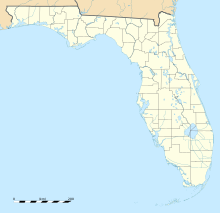Tampa Museum of Art
 |
|
| Established | 1979 |
|---|---|
| Location | Tampa, Florida |
| Coordinates | 27°56′54″N 82°27′43″W / 27.9484°N 82.4619°W |
| Type | Art museum |
| Website | www.tampamuseum.org |
The Tampa Museum of Art is located in downtown Tampa, Florida. It exhibits modern and contemporary art, as well as Greek, Roman, and Etruscan antiquities. The museum was founded in 1979 and debuted an award-winning new building in 2010 just north of its original site along Tampa's Riverwalk on the banks of Hillsborough River.
Since its inception, museum planners knew that the Tampa Museum of Art's original building was too small for its collection. Proposals for expansion or relocation were the subject of discussion and controversy for years. Several different plans were proposed either by the city of Tampa or the museum board, including:
In 2006, the museum board and the city of Tampa agreed to use public and private funds to construct a $33 million 66,000-square-foot (6,100 m2) new museum building just a half-block north of its original location. The museum is integrated into the city's Riverwalk project in Curtis Hixon Park at the site of old Curtis Hixon Hall. A new home for the Tampa Children's Museum (now known as the Glazer Children's Museum) was built simultaneously next door.
The old museum building had to be torn down to make way for the current one. In the interim, the Tampa Museum of Art was temporarily moved to the historic Centro Espanol building in West Tampa, which had been vacant for several years. Groundbreaking for the project took place on April 18, 2008, and the grand opening of the new Tampa Museum of Art took place on February 6, 2010
The building, by architect Stanley Saitowitz, is designed to look like "an electronic jewelbox box sitting on a glass pedestal" and makes use of aluminum, glass, and fiber optic color-changing lights in the exterior walls to "make the building itself a work of art".
The interior is more neutral, with mostly white surfaces and subdued lighting. The architect describes it as "a frame for the display of art, an empty canvass to be filled with paintings, a beautiful but blank container to be completed by its contents." It includes a gift shop and an indoor/outdoor cafe.
...
Wikipedia

